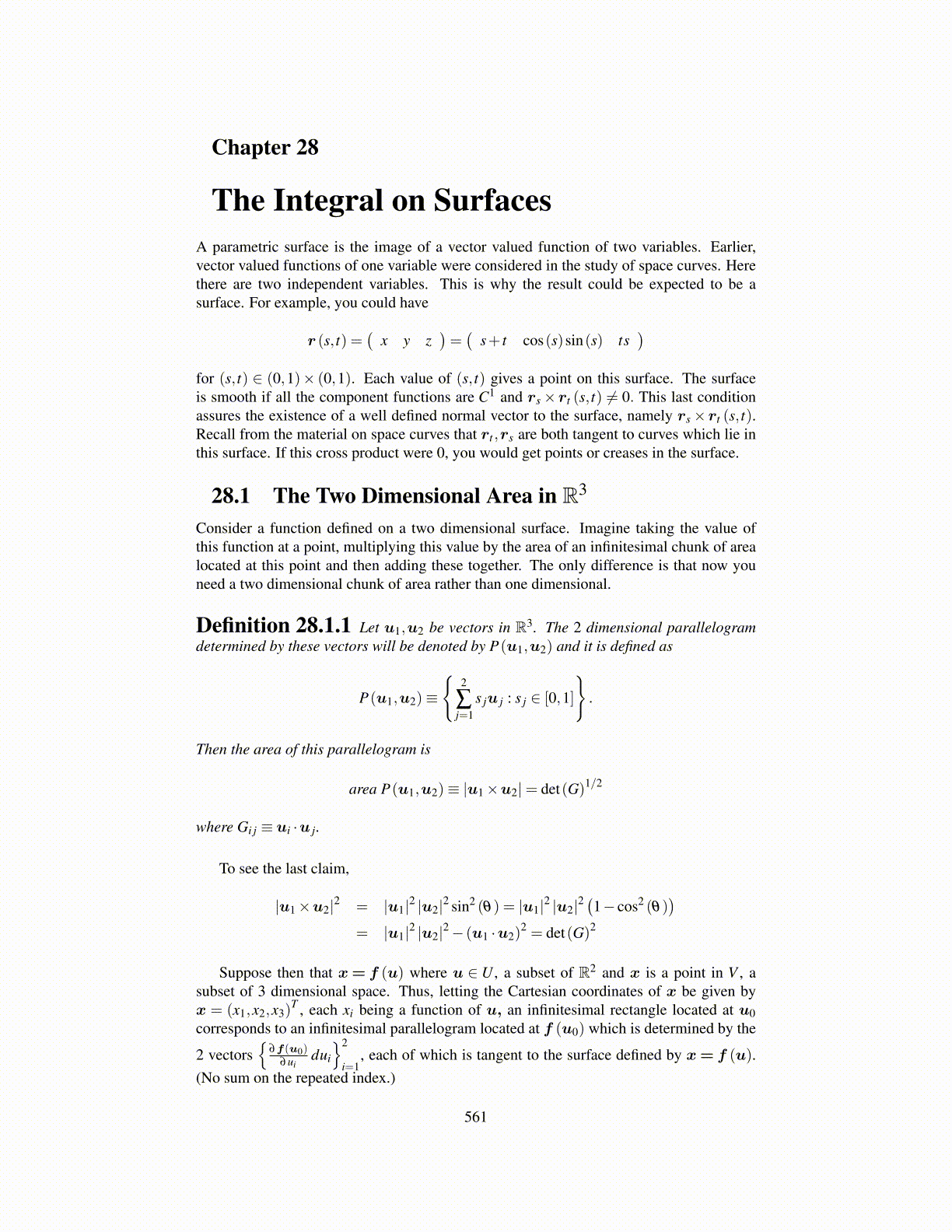
28.2. SURFACES OF THE FORM z = f (x,y) 561
Example 28.1.7 Let U = [0,2π]× [0,2π] and for (t,s) ∈U, let
f (t,s) = (2cos t + cos t coss,−2sin t − sin t coss,sins)T .
Find∫f(U) hdV where h(x,y,z) = x2.
Everything is the same as the preceding example except this time it is an integral of afunction. The area element is (coss+2) dsdt and so the integral called for is
∫f(U)
hdA =∫ 2π
0
∫ 2π
0
x on the surface︷ ︸︸ ︷2cos t + cos t coss
2
(coss+2) dsdt = 22π2
28.2 Surfaces of the Form z = f (x,y)The special case where a surface is in the form z = f (x,y) ,(x,y) ∈ U , yields a simpleformula which is used most often in this situation. You write the surface parametrically inthe form f (x,y) = (x,y, f (x,y))T such that (x,y) ∈U . Then
f x =(
1 0 fx)T
, f y =(
0 1 fy)T
and∣∣f x ×f y
∣∣=√1+ f 2y + f 2
x so the area element is√1+ f 2
y + f 2x dxdy.
When the surface of interest comes in this simple form, people generally use this areaelement directly rather than worrying about a parametrization and taking cross products.
In the case where the surface is of the form x = f (y,z) for (y,z) ∈ U , the area el-
ement is obtained similarly and is√
1+ f 2y + f 2
z dydz. I think you can guess what the
area element is if y = f (x,z). It also generalizes immediately to higher dimensions wherexki = f
(x1, ...,xki−1 ,xki+1 , ...,xn
).
There is also a simple geometric description of these area elements. Consider the sur-face z = f (x,y). This is a level surface of the function of three variables z− f (x,y). Infact the surface is simply z− f (x,y) = 0. Now consider the gradient of this function ofthree variables. The gradient is perpendicular to the surface and the third component ispositive in this case. This gradient is (− fx,− fy,1) and so the unit upward normal is just
1√1+ f 2
x + f 2y(− fx,− fy,1). Now consider the following picture.
knθ
θ
dA
dxdy
In this picture, you are looking at a chunk of area on the surface seen on edge and so itseems reasonable to expect to have dxdy = dAcosθ . But it is easy to find cosθ from thepicture and the properties of the dot product.
cosθ =n ·k|n| |k|
=1√
1+ f 2x + f 2
y
.